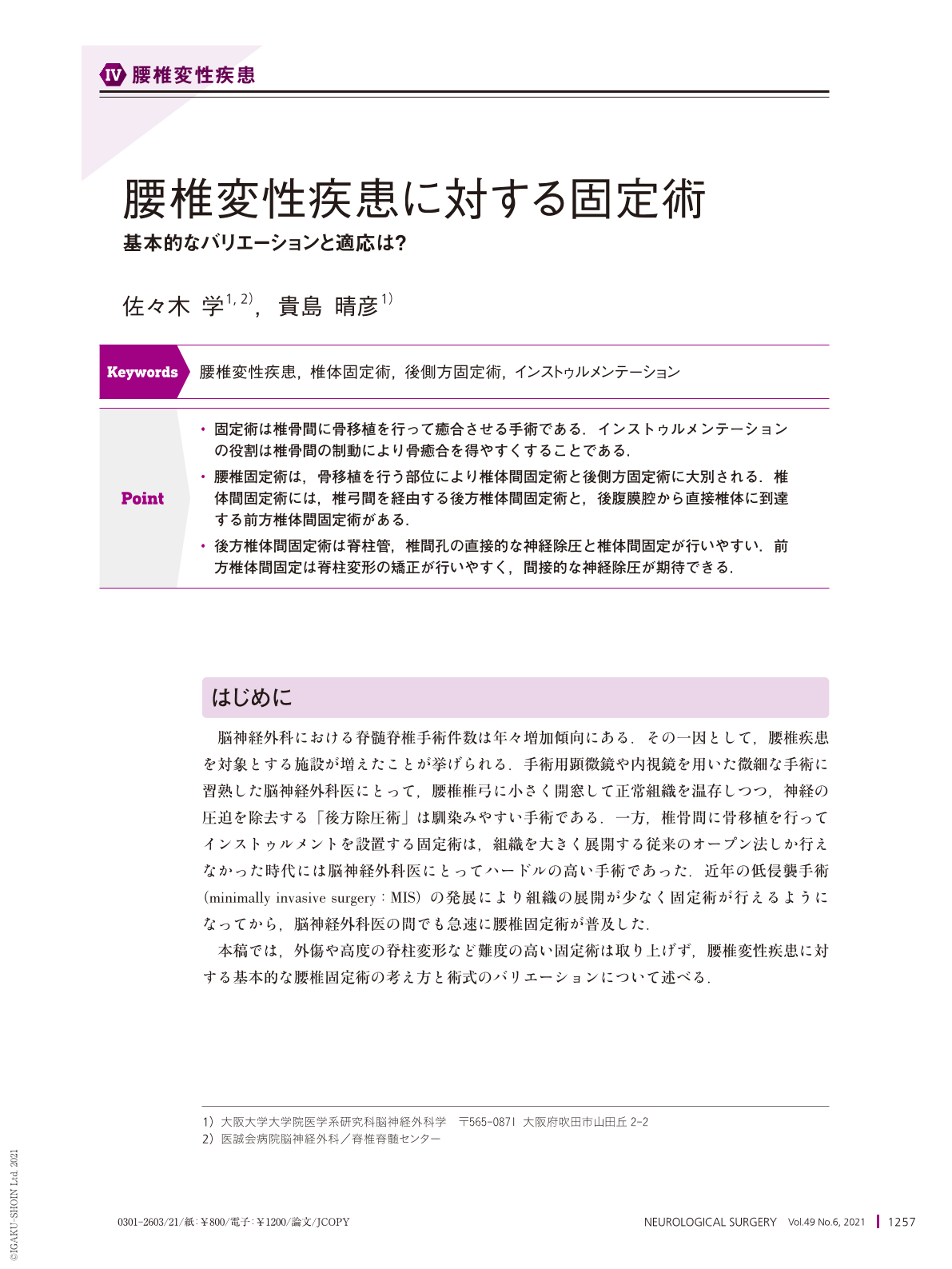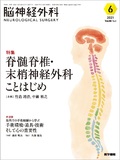Japanese
English
- 有料閲覧
- Abstract 文献概要
- 1ページ目 Look Inside
- 参考文献 Reference
Point
・固定術は椎骨間に骨移植を行って癒合させる手術である.インストゥルメンテーションの役割は椎骨間の制動により骨癒合を得やすくすることである.
・腰椎固定術は,骨移植を行う部位により椎体間固定術と後側方固定術に大別される.椎体間固定術には,椎弓間を経由する後方椎体間固定術と,後腹膜腔から直接椎体に到達する前方椎体間固定術がある.
・後方椎体間固定術は脊柱管,椎間孔の直接的な神経除圧と椎体間固定が行いやすい.前方椎体間固定は脊柱変形の矯正が行いやすく,間接的な神経除圧が期待できる.
Recently, many neurospinal surgeons are utilizing spinal fusion techniques for lumbar degenerative diseases. This paper aims to summarize the standard techniques of lumbar spinal fusion.
Lumbar spinal fusion is categorized into posterolateral fusion(PLF)and interbody fusion(IF)based on the location of bone grafting. PLF needs wide dissection of paraspinal muscles beyond the synovial joints. It is often utilized for long fusion at the thoraco-lumbar junction with open posterior instrumentation. Techniques for IF include posterior lumbar interbody fusion(PLIF)or transforaminal lumbar interbody fusion(TLIF)via the posterior approach, and anterior lumbar interbody fusion(ALIF), lateral lumbar interbody fusion(LLIF), and oblique lumbar interbody fusion(OLIFTM)performed via the anterior approach. PLIF/TLIF procedures include laminectomy and/or facetectomy for direct neural decompression, and local bone grafting into the interbody space through the interlaminar space or the vertebral foramen. ALIF/LLIF/OLIFTM are usually performed via the retroperitoneal approach. ALIF has an advantage of obtaining lordosis with insertion of a large angled cage from the anterior aspect of the intervertebral space. LLIF/OLIFTM are less invasive methods, in which bone grafting is performed through or beside the psoas muscle. As a larger cage can be plated between the bilateral edge of the intervertebral space, LLIF/OLIFTM has an advantage in the correction of scoliosis.

Copyright © 2021, Igaku-Shoin Ltd. All rights reserved.


